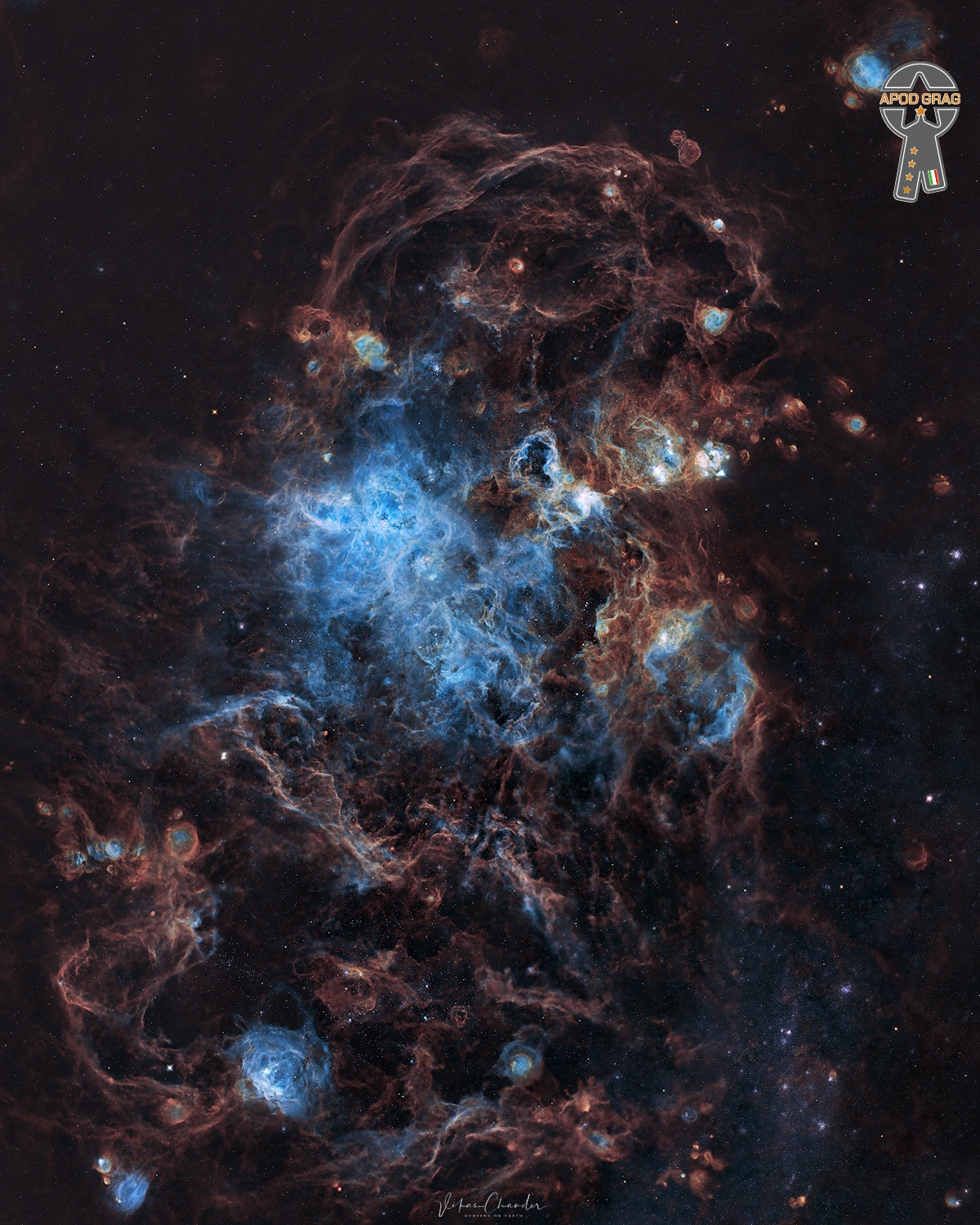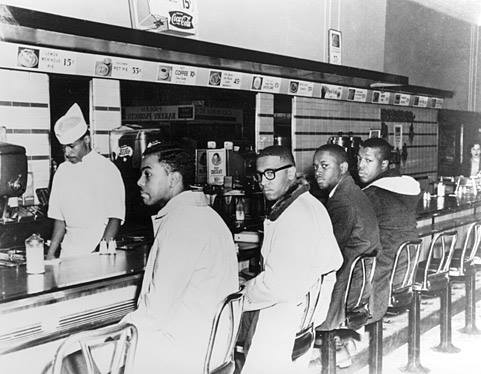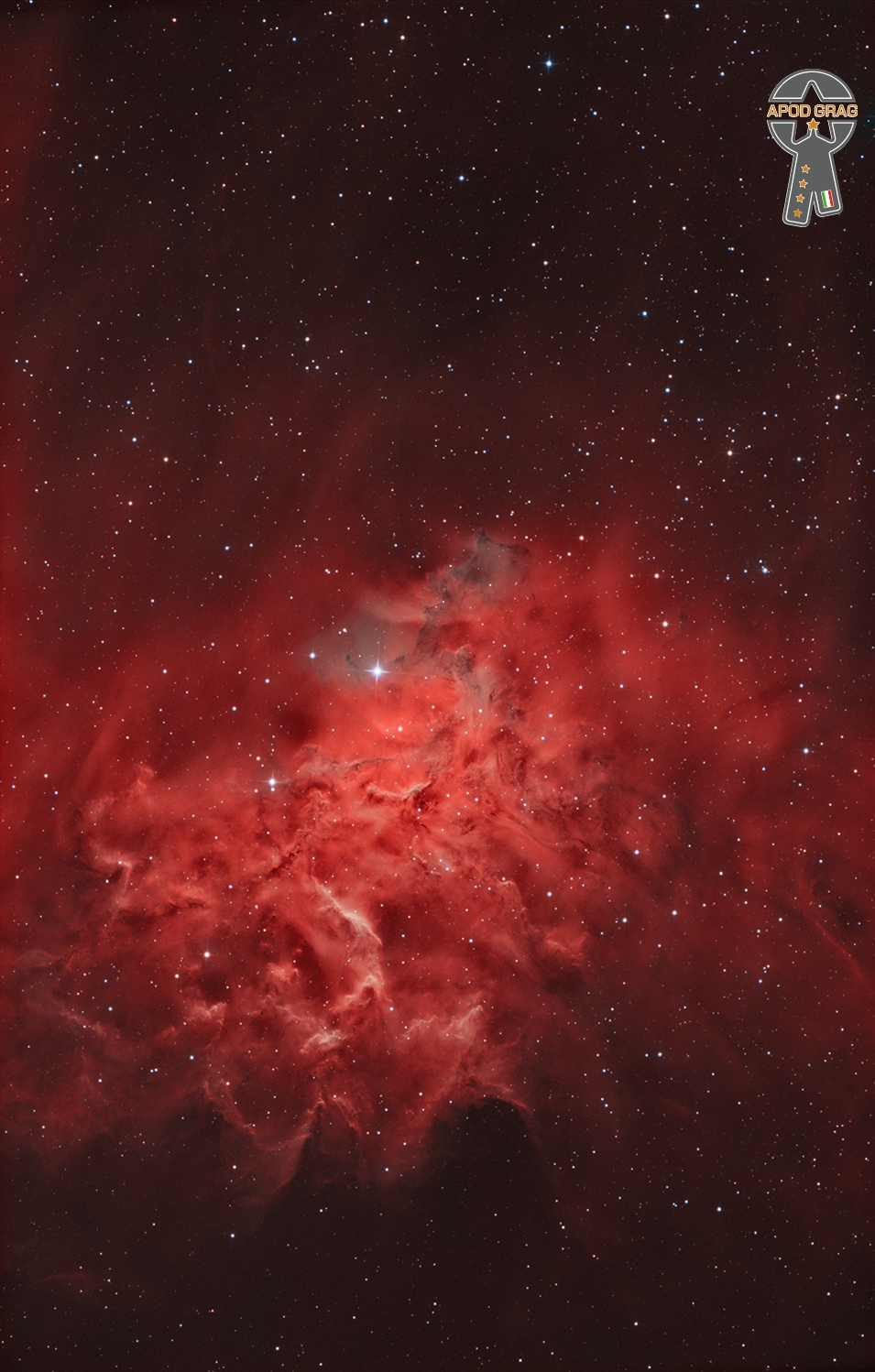Blog
Punxsutawney Phil predicts 6 more winter weeks after waking up to see his shadow on Groundhog Day Sunday February 2nd 2025. The weather in Punxsutawney, Pennsylvania, during the announcement was partly cloudy with temperatures hovering at about 20 degrees Fahrenheit. Snow was expected later on Sunday. Phil’s actual prediction, however, takes place ahead of time in a place called Gobbler’s Knob, a small hill just outside of the town, and has done so each year since 1887. This year marks the 139th time the event has occurred, according to the Pennsylvania Tourism Office.

A Tarantula web appear as a chaotic mass of silk and a similar region exists in space with a Tarantula like shape in the middle of it all! However, the web is spun to give birth rather than to end life as in the case of our Earth resident Theraphosidae. Several million young stars reside in a region of frenzied star birth known as 30 Doradus. Located 170,000 light-years away in the heart of the Tarantula Nebula, 30 Doradus is part of the Large Magellanic Cloud, a small, satellite galaxy of our Milky Way. It is the brightest star-forming region visible in a neighbouring galaxy, and it is home to the most massive stars ever seen….

Alphonso Johnson (born February 2, 1951 Philadelphia) is an American jazz bassist active since the early 1970s. Johnson was a member of the jazz fusion group Weather Report from 1973 to 1975, and has performed and recorded with numerous high-profile rock and jazz acts including Santana, Phil Collins, members of the Grateful Dead, Steve Kimock, and Chet Baker.
more...Graham William Nash OBE (born 2 February 1942) is an English-Americanmusician, singer and songwriter. He is known for his light tenor voice and for his contributions as a member of the Hollies and Crosby, Stills & Nash.
Nash is a photography collector, a published photographer, and digital image printing pioneer. He was inducted into the Rock and Roll Hall of Fame as a member of Crosby, Stills & Nash in 1997 and as a member of the Hollies in 2010. He was appointed an Officer of the Order of the British Empire (OBE) in the 2010 Birthday Honours List for services to music and to charity.
Nash holds four honorary doctorates, including one from the New York Institute of Technology, one in music from the University of Salford in 2011 and one in fine arts from Lesley University in Cambridge, Massachusetts.
more...Stan Getz (born Stanley Gayetski; February 2, 1927 – June 6, 1991 Philadelphia) was an American jazz saxophonist. Playing primarily the tenor saxophone, Getz was known as “The Sound” because of his warm, lyrical tone, with his prime influence being the wispy, mellow timbre of his idol, Lester Young. Coming to prominence in the late 1940s with Woody Herman‘s big band, Getz is described by critic Scott Yanow as “one of the all-time great tenor saxophonists”. Getz performed in bebop and cool jazz groups. Influenced by João Gilberto and Antônio Carlos Jobim, he also helped popularize bossa nova in the United States with the hit 1964 single “The Girl from Ipanema“.
more...Sonny Stitt (born Edward Hammond Boatner Jr.; February 2, 1924 – July 22, 1982 Boston) was an American jazz saxophonist of the bebop/hard bop idiom. Known for his warm tone, he was one of the best-documented saxophonists of his generation, recording more than 100 albums. He was nicknamed the “Lone Wolf” by jazz critic Dan Morgenstern because of his tendency to rarely work with the same musicians for long despite his relentless touring and devotion to the craft. Stitt was sometimes viewed as a Charlie Parker mimic, especially earlier in his career, but gradually came to develop his own sound and style, particularly when performing on tenor saxophone and even occasionally baritone saxophone.
more...
IC 405 (also known as the Flaming Star Nebula, SH 2-229, or Caldwell 31) is an emission and reflection nebula in the constellation Auriga north of the celestial equator, surrounding the bluish, irregular variable star AE Aurigae. It shines at magnitude +6.0. Its celestial coordinates are RA 05h 16.2m dec +34° 28′. It is located near the emission nebula IC 410, the open clusters M38 and M36, and the K-class star Iota Aurigae.
The nebula measures approximately 37.0′ x 19.0′, and lies about 1,500 light-years away from Earth. It is believed that the proper motion of the central star can be traced back to the Orion’s Belt area. The nebula is about 5 light-years across.

James Mercer Langston Hughes (February 1, 1901 – May 22, 1967) was an American poet, social activist, novelist, playwright, and columnist from Joplin, Missouri. One of the earliest innovators of the literary form called jazz poetry, Hughes is best known as a leader of the Harlem Renaissance.
Growing up in the Midwest, Hughes became a prolific writer at an early age. He moved to New York City as a young man, where he made his career. He studied at Columbia University in New York City. Although he dropped out, he gained notice from New York publishers, first in The Crisis magazine and then from book publishers, and became known in the creative community in Harlem. His first poetry collection, The Weary Blues, was published in 1926. Hughes eventually graduated from Lincoln University.
In addition to poetry, Hughes wrote plays and published short story collections, novels, and several nonfiction works. From 1942 to 1962, as the civil rights movement gained traction, Hughes wrote an in-depth weekly opinion column in a leading black newspaper, The Chicago Defender.
more...Joseph Leslie Sample (February 1, 1939 – September 12, 2014) was an American jazz keyboardist and composer. He was one of the founding members of The Jazz Crusaders in 1960, after which its name was shortened to “The Crusaders” in 1971. He remained a part of the group until its final album in 1991, and also the 2003 reunion album Rural Renewal.
Beginning in the late 1960s, he saw a successful solo career and guested on several recordings by other acts, including Miles Davis, George Benson, Jimmy Witherspoon, Michael Franks, B. B. King, Eric Clapton, Steely Dan, Joni Mitchell, Anita Baker, and the Supremes. Sample incorporated gospel, blues, jazz, latin, and classical forms into his music.
more...Joshua Redman (born February 1, 1969) is an American jazz saxophonist and composer. He is the son of jazz saxophonist Dewey Redman (1931–2006). In addition to his own projects, Redman has recorded and performed with musicians including Joey Alexander, Brian Blade, Ray Brown, Dave Brubeck, Chick Corea, The Dave Matthews Band, Jack DeJohnette, Bill Frisell, Aaron Goldberg, Larry Goldings, Charlie Haden, Herbie Hancock, Roy Hargrove, Roy Haynes, Billie Higgins, Milt Jackson, Elvin Jones, Quincy Jones, Big Daddy Kane, Geoff Keezer, B.B. King, The Lincoln Center Jazz Orchestra, Letieres Leite & Orkestra Rumpilezz, DJ Logic, Joe Lovano, Yo Yo Ma, Branford Marsalis, Christian McBride, John Medeski, Brad Mehldau, Pat Metheny, Marcus Miller, Paul Motian, Meshell Ndegeocello, Leon Parker, Nicholas Payton, John Psathas, Simon Rattle, Dewey Redman, Dianne Reeves, Melvin Rhyne, The Rolling Stones, The Roots, Kurt Rosenwinkel, John Scofield, Soulive, String Cheese Incident, Clark Terry, Toots Thielemans, The Trondheim Jazz Orchestra, Mark Turner, McCoy Tyner, Umphrey’s McGee, US3, Bugge Wesseltoft, Cedar Walton, Stevie Wonder and Sam Yahel.
more...Sadao Watanabe (渡辺 貞夫, Watanabe Sadao, born 1 February 1933) is a Japanese jazz musician who plays alto saxophone and sopranino saxophone. He is known for his bossa nova recordings, although his work encompasses many styles, with collaborations from musicians all over the world.
In 1969, Watanabe began working part time as a radio broadcaster, promoting jazz across Japan. From 1972, his programme My Dear Life ran for 20 years. He continued to perform internationally, including performances at Montreux Jazz Festival and Newport Jazz Festival. In 1970, he released his album Round Trip, featuring Chick Corea, Jack DeJohnette, and Miroslav Vitouš. Watanabe continued performing and recording throughout the 1970s and 1980s, amassing a catalogue of more than 70 albums as leader.
more...Dennis Emmanuel Brown CD (1 February 1957 – 1 July 1999) was a Jamaicanreggae singer. During his prolific career, which began in the late 1960s when he was aged eleven, he recorded more than 75 albums and was one of the major stars of lovers rock, a subgenre of reggae. Bob Marley cited Brown as his favourite singer, dubbing him “The Crown Prince of Reggae”, and Brown would prove influential on future generations of reggae singers.
After returning to Kingston, Jamaica, on the evening of 30 June 1999, he was rushed to Kingston’s University Hospital, suffering from cardiac arrest. Brown died the next day, the official cause of his death was a collapsed lung.
more...More Posts
- Music for Surviving the Pandemic
- The Cosmos with M77
- Marija Šestić Day
- Stanley Cowell Day
- J.B. Lenoir Day
- Blind Willie McTell Day
- World Music with Tamikrest
- Daily Roots with Armageddon Clash
- Music for Surviving the Pandemic
- Idir Memorial
- Richie Cole Memorial
- The Cosmos with CW Tauri: [B77] 71 (Bernes)
- Sonny Payne Day
- Ron Carter Day
- Don Friedman Day
- Maynard Ferguson Day
- Umm Kulthum Day
- World Music with Marla Leigh
- Daily Roots with Jah Bless
- Music for Surviving the Pandemic

